Streamlined design found a welcome home in American kitchens. In the mid-1930s, as the economy began to improve, consumers looked to update their homes. Then as now, most people began with their kitchens, and Chicago supplied the market with a multitude of streamlined products.
At the top of the list stood a group of Sunbeam appliances made by the Chicago Flexible Shaft Company. Established in 1897, the company originally made sheep-shearing and horse-trimming equipment before adding a line of small household appliances in 1921. Well-designed and made to last, Sunbeam appliances gained a national reputation for quality that helped the company survive the Great Depression. After World War II, Flexible Shaft changed its name to the Sunbeam Corporation. They stayed in Chicago until the early 1980s before moving to their current location in Boca Raton, Florida.
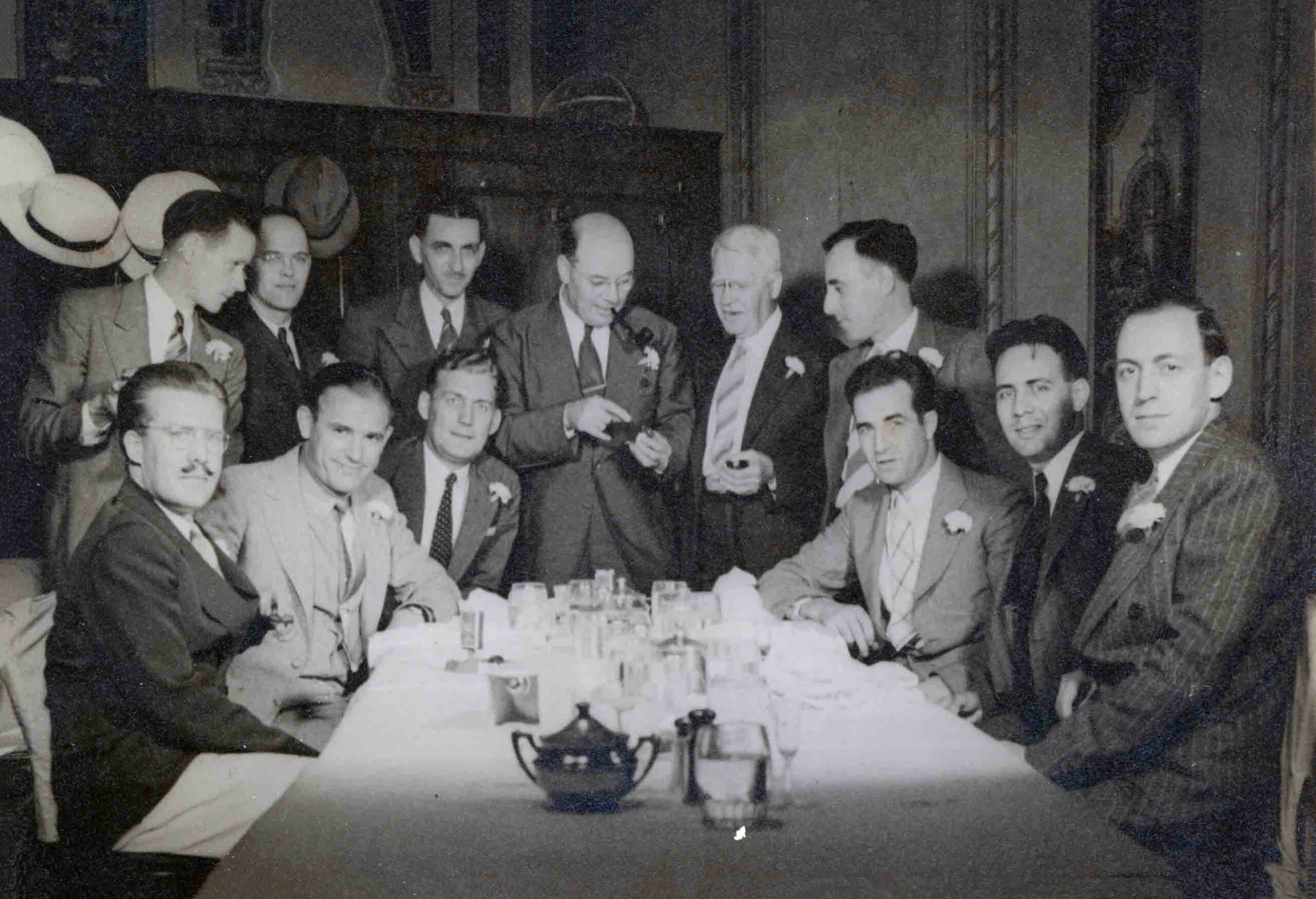
The Sunbeam Team, c. 1940
Courtesy of Tasha Coats
This image includes George T. Scharfenberg, seated on the far left. Standing immediately behind him is engineer Ludvik Joseph Koci, while chief engineer Ivar Jepson is seated on the far right.
A talented team of designers and engineers created Sunbeam appliances. They were led by Ivar Jepson, a Swedish-born electrical engineer who in 1929 started working for the Chicago Flexible Shaft Company. Jepson developed the original Sunbeam Mixmaster. In 1936, the company hired George T. Scharfenberg to update their product lines with a more streamlined look. Scharfenberg collaborated with Jepson and other company engineers on many products that became icons of American design.
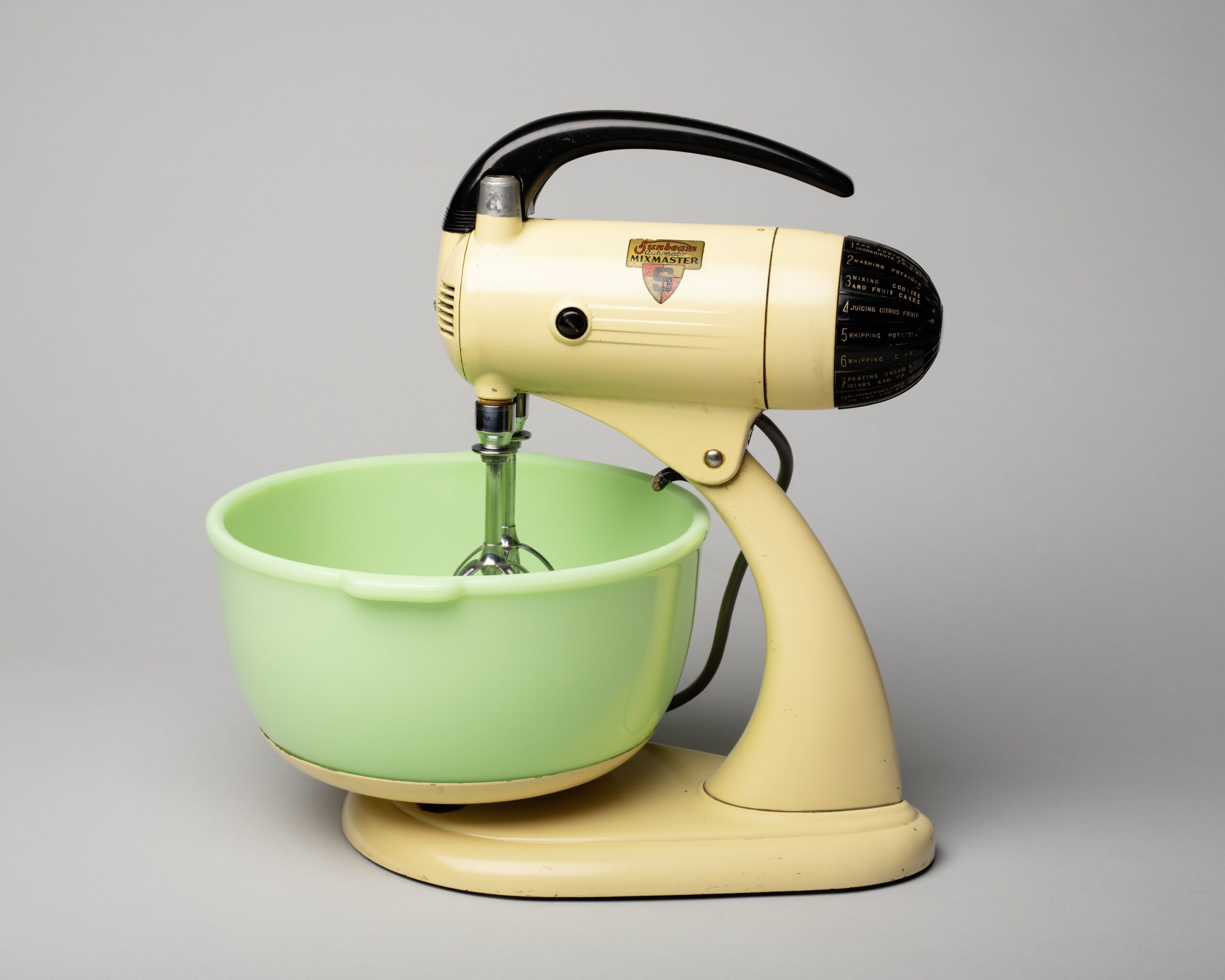
Sunbeam Model 5 Mixmaster, 1938–39
Designed by Ivar Jepson and George T. Scharfenberg, Chicago, Illinois, 1938–39
Painted metal body with Bakelite controls and handle, glass bowls, and stainless-steel beaters
Courtesy of William E. Meehan, Jr.
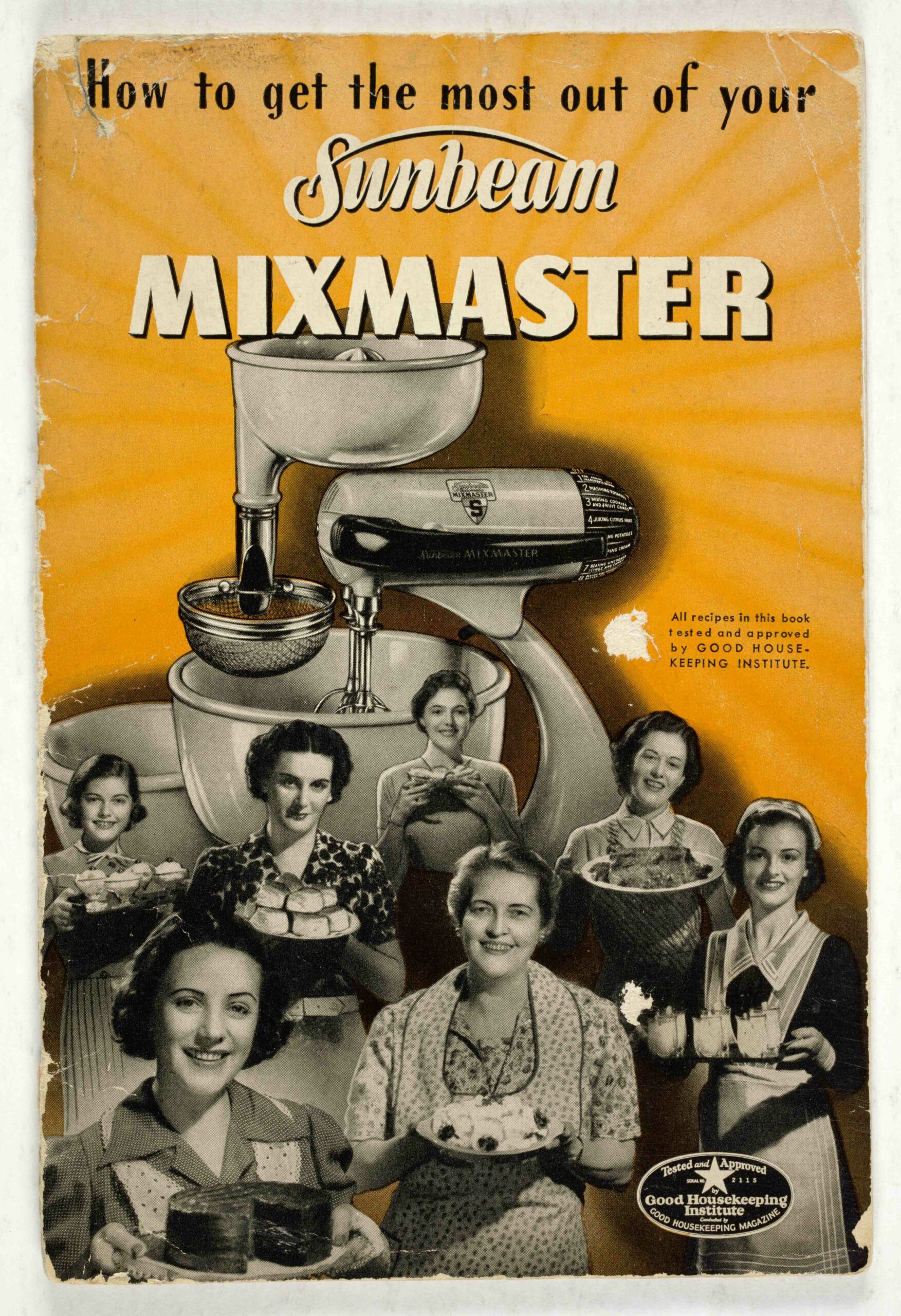
How to get the most out of your Sunbeam Mixmaster, 1940
Owner’s manual with recipe page published by Chicago Flexible Shaft Company
Chicago History Museum, ICHi-173668
A streamlined body and powerful motor made the Model 5 Mixmaster a national best seller. The manual advised owners to “Keep Your Mixmaster Out” and “plugged in ready for instant use at the turn of the switch.” Owning a Mixmaster became something of a status symbol for most Depression-era Americans who had to scrimp and save for every purchase.
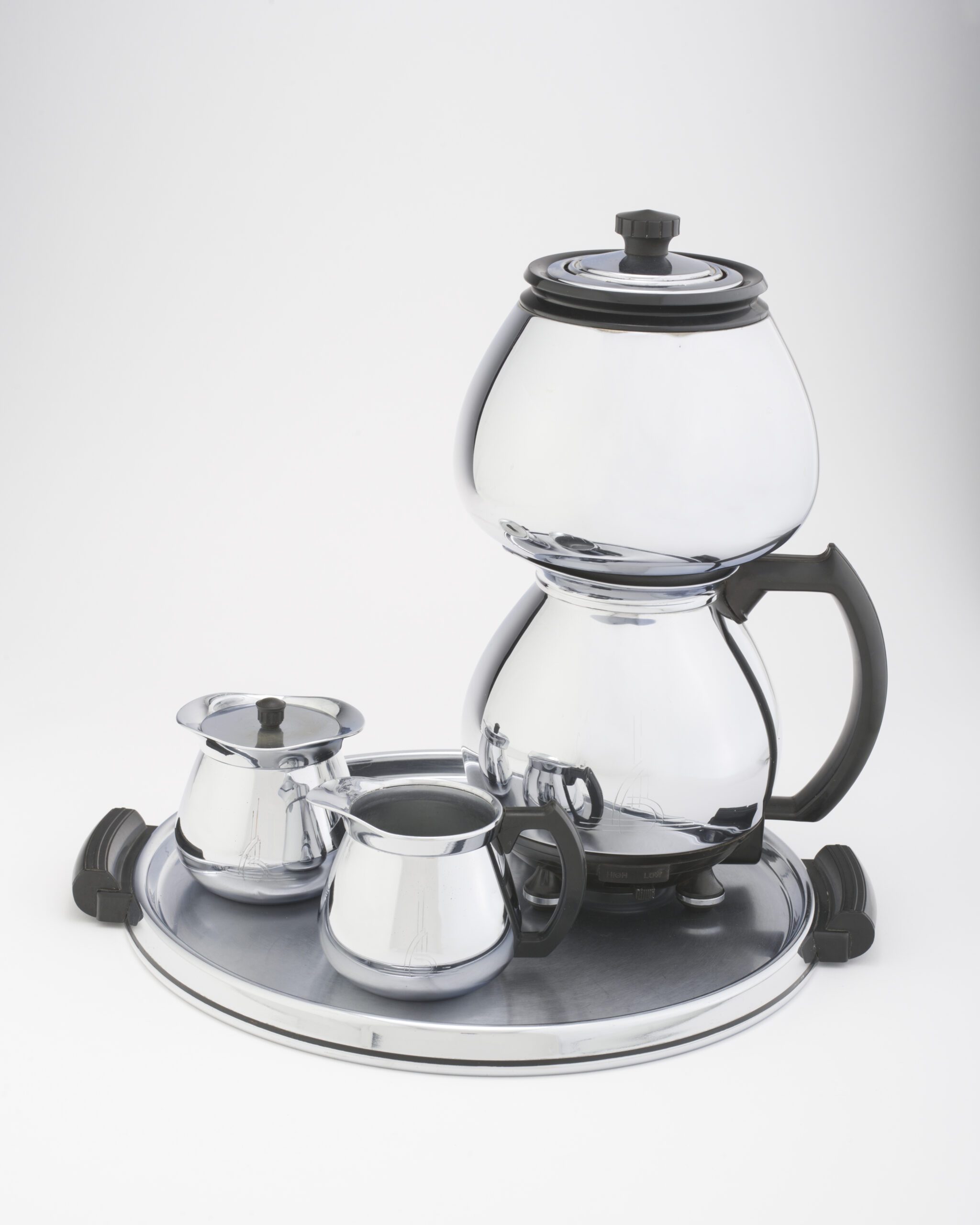
Sunbeam Coffeemaster Model C-20, 1938
Designed by Alfonso Iannelli for the Chicago Flexible Shaft Co., Chicago, Illinois, 1938
Chromium-plated copper vessels with Bakelite top, base, and handles
Chicago History Museum, Gift of William E. Meehan, Jr., 2018.13.1–4
The Sunbeam Coffeemaster exemplifies Chicago’s ability to mass-produce and mass-market streamlined goods. Its spherical body housed a patented internal thermostat that allowed one “to simply put water in the lower vessel and coffee in the upper vessel—and forget it.” Despite a steep price of $16 ($280 today), the Coffeemaster quickly became a national best seller and remained in production until the late 1950s.
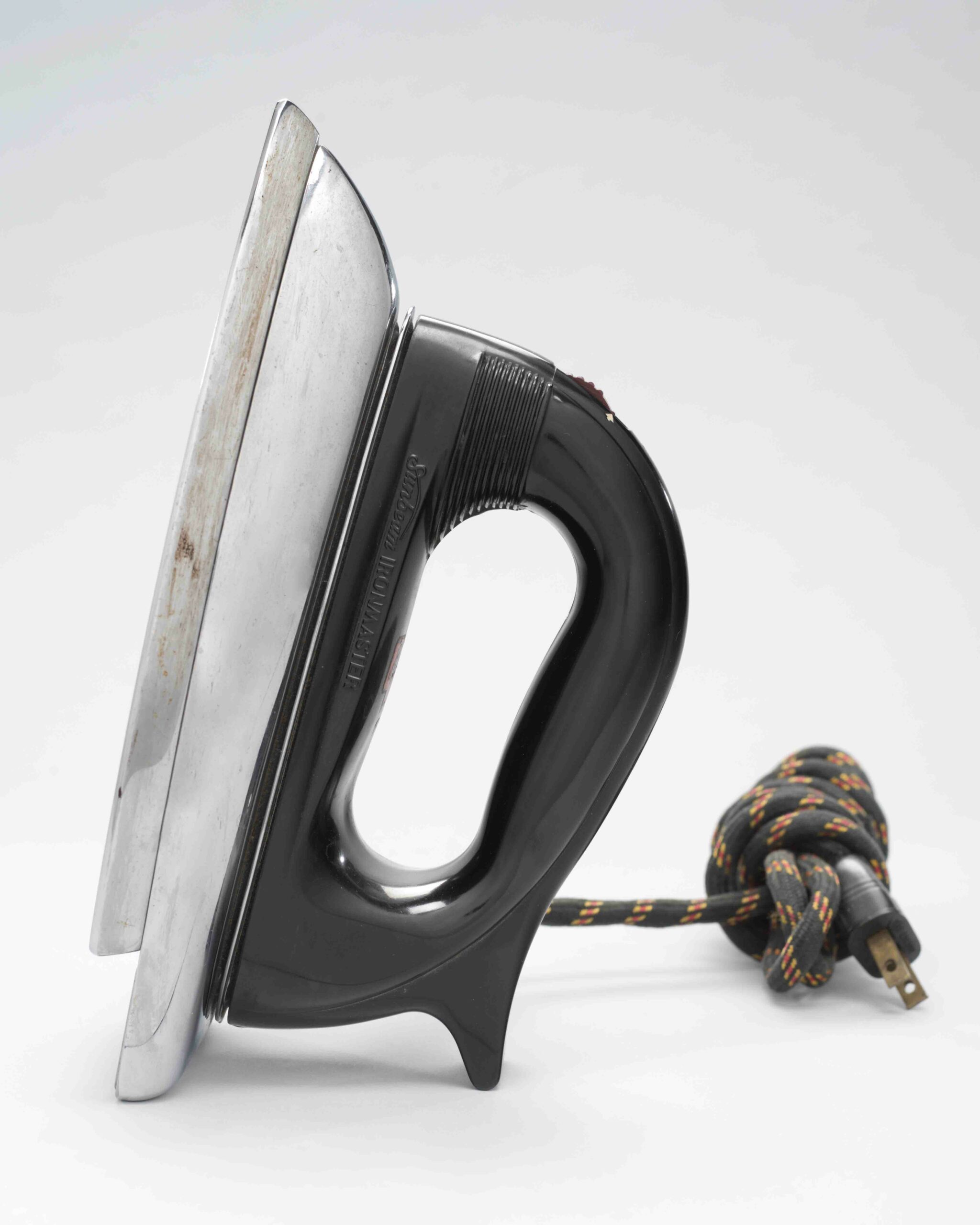
Sunbeam Ironmaster Model A-4, 1939
Designed by George Scharfenberger, Chicago, Illinois, 1939
Chrome with Bakelite handle
Chicago History Museum, Gift of Michael Trenary, 1988.414
The Sunbeam Ironmaster featured a streamlined body and thumb-tip heat regulator in the handle. As advertised, its “perfectly balanced” body would put an end to “tired arms and shoulders.”
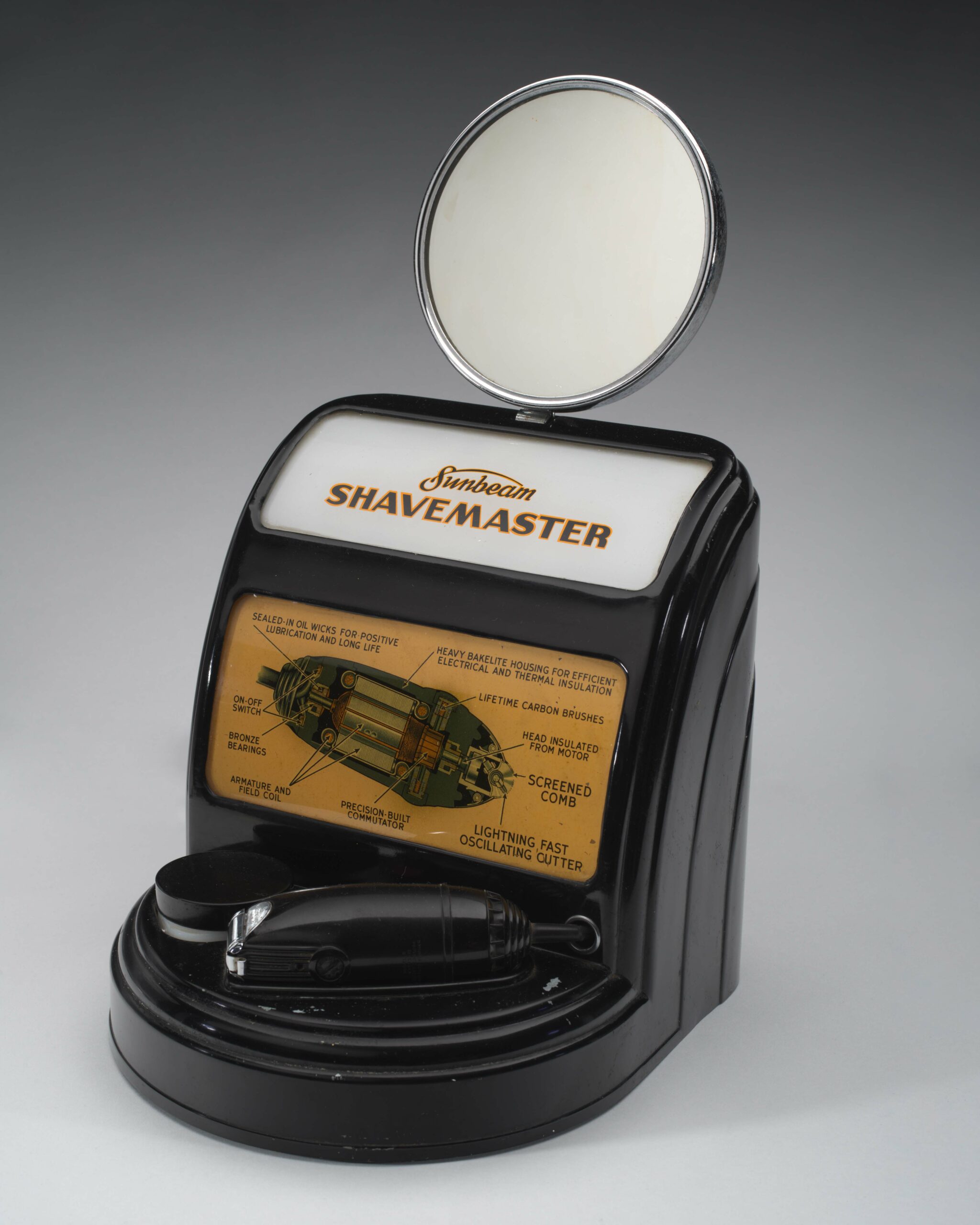
Sunbeam Shavemaster display unit, 1939
Designed by George Scharfenberger, Chicago, Illinois, 1939
Chrome, metal, glass, and Bakelite
Chicago History Museum purchase, Anna Hasburg Fund, 2017.11.1ab
Effective advertising played a big role in Sunbeam’s success. The display unit, used at sales counters, lit up and featured an operating shaver with a mirror to check results.
These Sunbeam appliances and other streamlined products from the 1930s–50s were on display in the exhibition Modern by Design: Chicago Streamlines America.
Join the Conversation